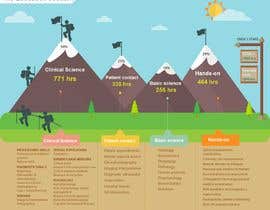Important Daily Behaviors That Can Create Neck And Back Pain And How To Avoid Them
Important Daily Behaviors That Can Create Neck And Back Pain And How To Avoid Them
Blog Article
Content Written By-Hermansen Svenningsen
Preserving proper stance and preventing usual pitfalls in daily activities can significantly influence your back wellness. From exactly how you rest at your workdesk to exactly how you lift hefty objects, tiny changes can make a big distinction. Think of a day without the nagging neck and back pain that prevents your every step; the remedy might be less complex than you think. By making a couple of tweaks to your everyday routines, you could be on your method to a pain-free existence.
Poor Stance and Sedentary Way Of Living
Poor stance and a sedentary lifestyle are two major factors to pain in the back. When you slouch or hunch over while sitting or standing, you placed unnecessary pressure on your back muscle mass and spinal column. This can result in muscle imbalances, stress, and eventually, chronic pain in the back. Furthermore, sitting for extended periods without breaks or exercise can weaken your back muscle mass and bring about stiffness and discomfort.
To fight poor posture, make a conscious effort to sit and stand right with your shoulders back and straightened with your ears. Keep in mind to maintain your feet flat on the ground and avoid crossing your legs for extended periods.
Including normal stretching and reinforcing exercises into your day-to-day regimen can also assist enhance your position and ease neck and back pain associated with a less active lifestyle.
Incorrect Training Techniques
Inappropriate training methods can dramatically add to back pain and injuries. When you raise hefty objects, bear in mind to flex your knees and utilize your legs to lift, instead of relying on your back muscle mass. Avoid turning your body while lifting and maintain the things near to your body to minimize strain on your back. It's critical to maintain a straight back and avoid rounding your shoulders while raising to avoid unneeded stress on your spine.
Always analyze the weight of the things before lifting it. If it's also hefty, ask for help or usage devices like a dolly or cart to carry it securely.
Keep in mind to take breaks throughout raising jobs to give your back muscular tissues a chance to relax and avoid overexertion. By executing appropriate lifting strategies, you can avoid neck and back pain and minimize the danger of injuries, guaranteeing your back remains healthy and solid for the long-term.
Lack of Regular Workout and Stretching
An inactive lifestyle lacking routine workout and extending can significantly contribute to pain in the back and pain. When you do not engage in physical activity, your muscles end up being weak and inflexible, leading to poor position and boosted pressure on your back. Routine exercise aids strengthen the muscle mass that support your spine, improving security and reducing the risk of pain in the back. Incorporating stretching right into your routine can also enhance versatility, stopping stiffness and discomfort in your back muscular tissues.
To prevent pain in the back triggered by an absence of workout and stretching, aim for a minimum of 30 minutes of moderate exercise most days of the week. Include exercises that target your core muscles, as a strong core can help minimize pressure on your back.
Additionally, take breaks to extend and relocate throughout the day, specifically if you have a workdesk work. Easy stretches like touching your toes or doing shoulder rolls can help ease stress and avoid back pain. Prioritizing routine exercise and extending can go a long way in preserving a healthy back and decreasing discomfort.
simply click the up coming article , remember to stay up straight, lift with your legs, and remain energetic to stop neck and back pain. By making easy modifications to your everyday habits, you can avoid the pain and limitations that come with neck and back pain. Deal with your spinal column and muscles by exercising excellent position, correct training methods, and regular exercise. https://theconversation.com/physio-chiro-osteo-and-myo-whats-the-difference-and-which-one-should-i-get-149993 will certainly thanks for it!
